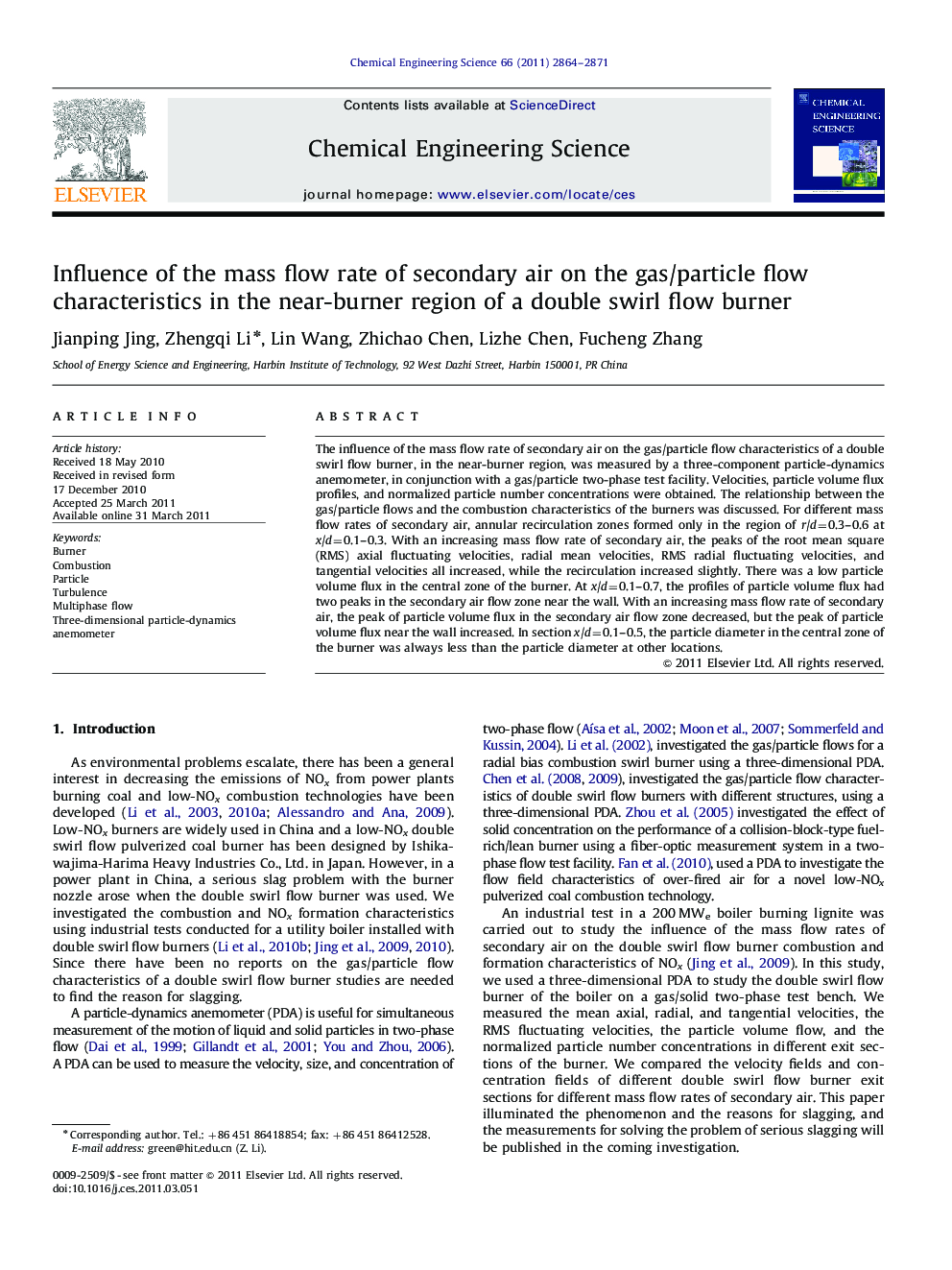| Article ID | Journal | Published Year | Pages | File Type |
|---|---|---|---|---|
| 156364 | Chemical Engineering Science | 2011 | 8 Pages |
The influence of the mass flow rate of secondary air on the gas/particle flow characteristics of a double swirl flow burner, in the near-burner region, was measured by a three-component particle-dynamics anemometer, in conjunction with a gas/particle two-phase test facility. Velocities, particle volume flux profiles, and normalized particle number concentrations were obtained. The relationship between the gas/particle flows and the combustion characteristics of the burners was discussed. For different mass flow rates of secondary air, annular recirculation zones formed only in the region of r/d=0.3–0.6 at x/d=0.1–0.3. With an increasing mass flow rate of secondary air, the peaks of the root mean square (RMS) axial fluctuating velocities, radial mean velocities, RMS radial fluctuating velocities, and tangential velocities all increased, while the recirculation increased slightly. There was a low particle volume flux in the central zone of the burner. At x/d=0.1–0.7, the profiles of particle volume flux had two peaks in the secondary air flow zone near the wall. With an increasing mass flow rate of secondary air, the peak of particle volume flux in the secondary air flow zone decreased, but the peak of particle volume flux near the wall increased. In section x/d=0.1–0.5, the particle diameter in the central zone of the burner was always less than the particle diameter at other locations.
